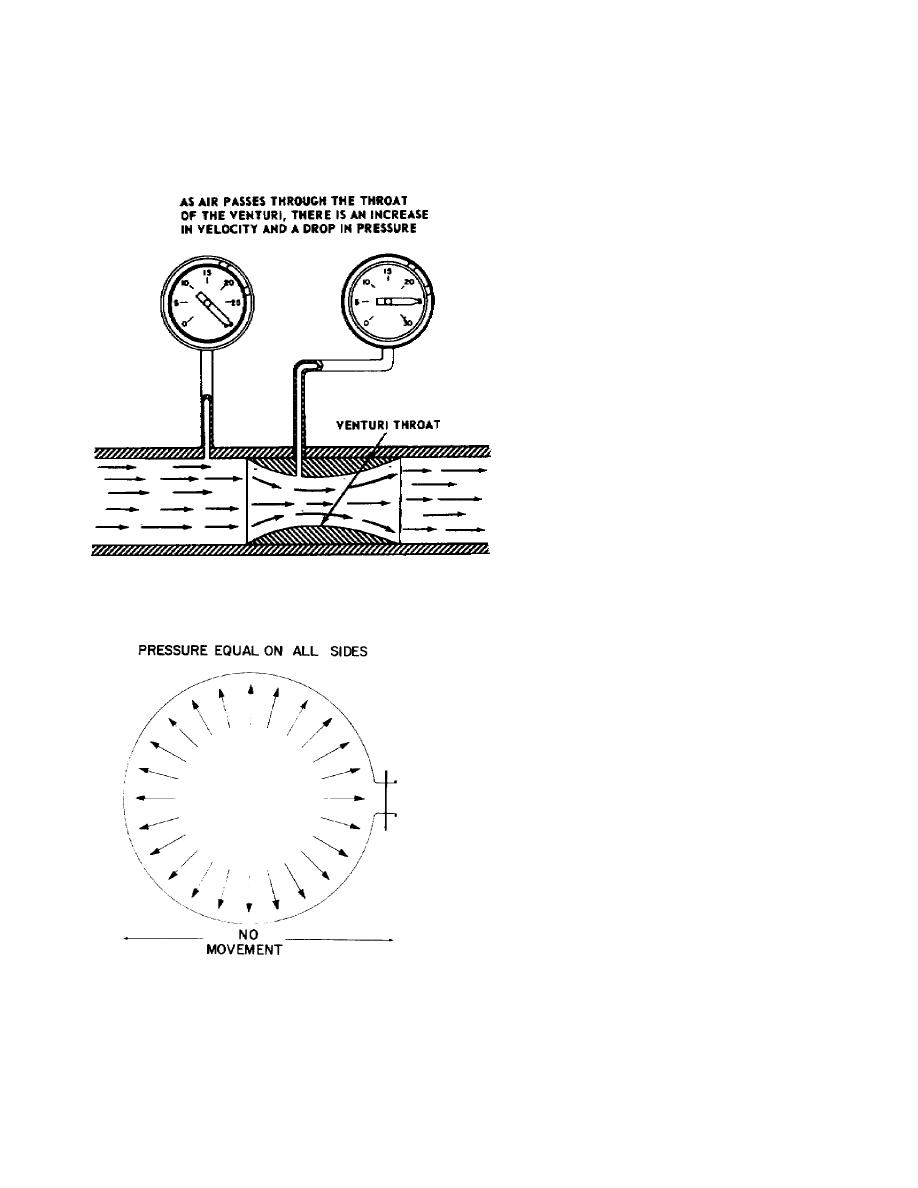
area), the airflow must increase velocity if it is to continue to
flow the same number of pounds per second of airflow (Bernoulli's
Principle). In order to obtain the necessary velocity energy to
accomplish this, the air must give up some pressure and temperature
energy (law of conservation of energy). The net result of flow
through this restriction would be a
decrease in pressure and temperature
and an increase in velocity. The
opposite would be true if air were to
flow from a smaller into a larger
duct (divergent area); velocity
would then decrease, and pressure
and temperature would increase. The
throat of an automobile carburetor is a
good example of the effect of airflow
through a restriction (venturi); even on the
hottest day the center portion of
the carburetor feels cool.
Convergent and divergent areas
are used throughout a gas
turbine engine to control
pressure and velocity of the
airgas stream as it flows
through the engine.
1.4.
THEORY OF JET PROPULSION
The principle of jet
propulsion can be illustrated by
a toy balloon. When inflated and
the stem is sealed, the pressure
is exerted equally on all
internal surfaces. Since the
force of this internal pressure
is balanced there will be no
tendency for the balloon to move.
If the stem is released
the balloon will move in a
direction away from the escaping
jet of air. Although the flight
of the balloon may appear
erratic, it is at all
5



 Previous Page
Previous Page
